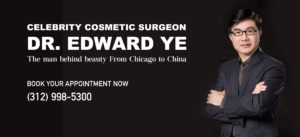Also referred to as flash lamp therapy, Intense Pulsed Light or IPL therapy is one technique that is now widely used in the field of dermatology. It involves the use of a broad but controlled spectrum of light to remove stretch marks and acne scars, as well as prevent hair regrowth, among others.
Contrary to what some people believe, IPL is not laser and vice versa, although both use light for treatment that is converted into heat energy to destroy cells that produce melanin or broken capillaries that lead to the appearance of spider veins.
The major difference between the two is the type of light they emit. Laser provides a single band of light colour (monochromatic) to target a specific area and condition. IPL, on the other hand, provides a broad spectrum of light (polychromatic), which covers a bigger area and produce different wavelengths. In other words, laser has a more targeted approach. Although both provide high intensity, IPL can be more controlled and therefore less likely to be painful than laser.
IPL is a non-invasive and non-ablative procedure, which means it doesn’t require anaesthesia or even sedation to be performed. It is non-ablative since the broad spectrum of light penetrates the deeper layer of the skin without harming or injuring the upper layer or the epidermis. Further, since the wavelengths can be filtered, IPL doesn’t have any negative effect on the neighboring cells and tissues of the targeted area.
Thus, it’s expected that with IPL, the risks are minimal and often, the patient can go back to normal activities right after. For this reason, it is often dubbed as a lunchtime procedure.
Who should undergo and expected results
A dermatology clinic that offers both laser and IPL therapies can suggest to a patient which of the two is more appropriate depending on the particular skin or hair condition.
IPL is effective in treating vascular lesions that result to spider or telangiectatic veins. These are veins which capillaries have been broken, leading to the appearance of the veins on the surface of the skin. IPL can be used to blast these broken capillaries, destroy them eventually, cut the blood flow into these veins, and let the veins die until they are reabsorbed by the body. However, the actual effects of IPL still depend on the severity, size, and site of the vascular lesions. IPL can also be used to lighten prominent birthmarks by destroying the pigment-producing cells that cause the discolouration.
The technique is also effective in treating skin conditions caused by prolonged or consistent exposure to the sun (photo damage). These include age spots and freckles. It can also treat melasma, acne, and stretch marks. What the technology does is destroy the cells that produce melanin, the pigment that provides colour to the skin. Once these cells are destroyed, the body is forced to generate newer skin cells, which lead to a more even skin tone.
IPL can also be used for removing unwanted hair in the bikini line, face, underarms, legs, and chest by destroying the follicles that produce hair. It is more effective on people with dark hair.
Since the treatment is broad, it usually takes at least three treatments before the desired results are achieved. The sessions are spaced a month apart to give the skin enough time to heal.
How the procedure works
Like laser treatments, IPL is not a regulated procedure, which means anyone who has been trained to operate the machine can perform the procedure. For your safety and peace of mind, however, it’s best if the technician has other certifications or training aside from using the machine. He or she should have a deeper knowledge of skin and the conditions that affect it. One can also look for clinics with professional aestheticians. These people have at least 260 hours of training and are licensed.
Before the treatment, the dermatologist will evaluate the condition of the skin to confirm if it is suitable for IPL.
For the procedure, the targeted area, such as the face, will be cleansed first, removing any dirt that may reduce the effectiveness of the treatment. A cold gel is then applied to the skin to significantly minimize the burning sensation. The patient is also provided with a protective eyewear, which should be worn throughout the course of the therapy.
The aesthetician controls the intensity or wavelength of the light pulses that come out of the IPL head during the treatment.
After the therapy, the patient can go back to regular activities, as long as exposure to the sun is avoided.

